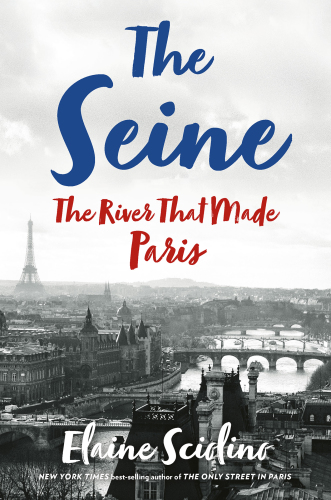
The Seine
The River that Made Paris
کتاب های مرتبط
- اطلاعات
- نقد و بررسی
- دیدگاه کاربران
نقد و بررسی

June 1, 2019
A contributing writer and former chief diplomatic correspondent and Paris bureau chief for the New York Times, Sciolino vivified the City of Light by capturing a few enchanting blocks in her New York Times best-selling The Only Street in Paris. Here she focuses on the city's famous river, starting at the near-mythic source of the Seine in distant Burgundy and following it down to Le Havre, where it flows into the sea.
Copyright 2019 Library Journal, LLC Used with permission.

August 12, 2019
In this entertaining and informative travel memoir, former New York Times Paris bureau chief Sciolino (The Only Street in Paris) explores France’s celebrated river, the Seine. “In the spring of 1978 I was seduced by a river,” writes Sciolino, who then describes the Seine as “the most romantic river in the world” and explains how it has served as a strategic waterway in times of war (it slowed Hitler’s retreat after D-Day) and peace (it was an important shipping route for the Romans). She ventures to its inauspicious source in Burgundy—a “little hole in a man-made limestone grotto in the middle of nowhere”—and is inspired by the fable of the Gallo-Roman “healing goddess” Sequana for whom the river was named. Following its course, she meets a fourth-generation grape grower in Champagne; rowers who preserve historic boats; the River Brigade, who are “just like Miami Vice, no?”; and an elderly barge-woman mourning her landlocked retirement. Anecdotes abound of the bridges that cross the Seine in Paris, seasonal sand-and-palm-tree “beaches,” and “bouqinistes... the literary gatekeepers” who sell books beside the river. In a timely afterword following the 2019 fire at Notre Dame, she writes, “On the night of the great fire, the river was the cathedral’s salvation,” providing half the water used to douse the blaze. Sciolino’s enthusiasm buoys readers in this fluid literary work.

October 1, 2019
The veteran New York Times contributing writer and former Paris bureau chief shares her love affair with Paris and the Seine with enchanting anecdotes and insights. Sciolino (The Only Street in Paris: Life on the Rue des Martyrs, 2016, etc.), who has lived in Paris since 2002, presents more of a voyage than a history, from Burgundy to the sea, traveling the 483 miles on the river's looping path from the Plateau de Langres to Honfleur and the English Channel. Along the way, the Seine is anchored by Paris and then Rouen, where it widens enough for oceangoing ships to reach the port of Le Havre. The source of the river is the underground springs where the Gauls worshiped the healing goddess Sequana, who, according to the author, is the true symbol of the river. Through the years, the river has been altered many times. Napoleon eliminated many of the islands to ease navigation, and he established the river as the center point for Paris' street-numbering system. Baron Haussmann transformed the riverfront with bridges, locks, and dams as well as tree-shaded promenades. As we travel downriver with our genial guide, we note that the right side of the river symbolizes money, politics, scandal, and the power of the media while the left signifies freedom, liberty, free speech, and free sex. Throughout, Sciolino provides wonderful, detailed interviews of former barge people, houseboat dwellers, booksellers, and members of the River Brigade, which polices the river. The author also takes us into the world of the impressionists, and in Rouen, once the most important port, we find ancient windmills, Joan of Arc, and the place where Monet obsessed over the light on the cathedral. Then it's on to Le Havre, the port created by François I in 1517, and finally, Honfleur, which "travel guides often refer to...as one of the prettiest towns in France." Francophiles will adore this book, and others may become Francophiles as they read.
COPYRIGHT(2019) Kirkus Reviews, ALL RIGHTS RESERVED.

October 15, 2019
This entertaining account flows along like a love letter to the Seine, the second longest river in France. Tracing its storied history and many complexities, author Sciolino (The Only Street in Paris, 2015) offers brief chapters that integrate historical research, personal anecdotes, interviews, and perceptive observations. Much of the text concentrates on how la Seine shaped the cultural development of Paris, citing major architectural landmarks, magnificent bridges, trade and barter economies, and the Seine's floating communities: homes, restaurants, even bookstores. Along the way, Sciolino shares insights about Paris social customs, past and present, and includes an entire chapter on iconic movie scenes featuring the river (on an average day, Parisians can encounter up to 20 film sets). A poignant afterword describes how water pumped from the Seine helped save Notre Dame after its devastating fire in early 2019. Readers will enjoy this engaging and authoritative account, whether planning a trip, reminiscing about past travels, or sitting in an armchair, dreaming of wandering along romantic riverbanks.(Reprinted with permission of Booklist, copyright 2019, American Library Association.)

























دیدگاه کاربران